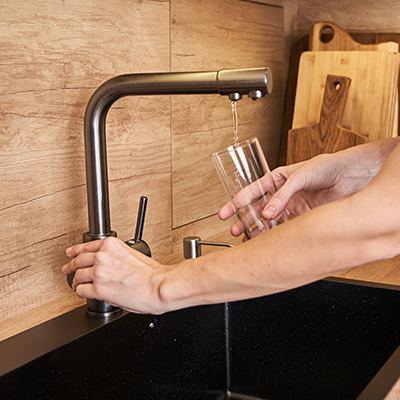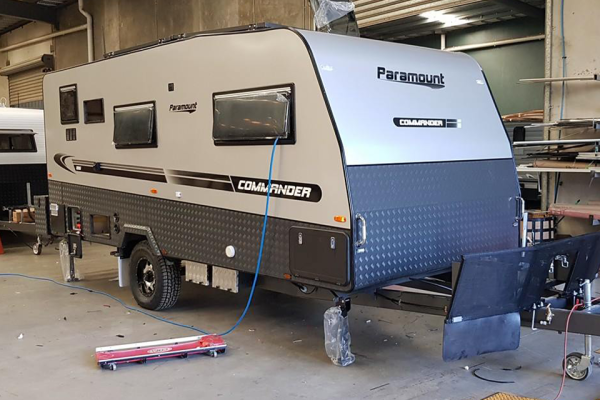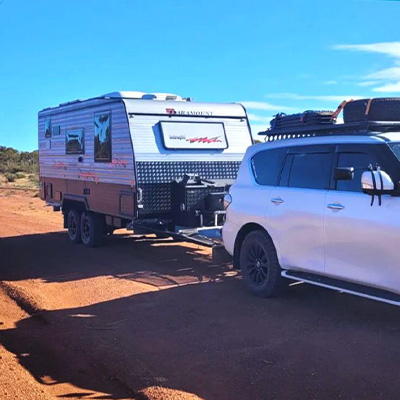
With so many caravan sizes available, choosing the right one for your adventures is essential. When we talk about caravan size we normally refer to length but width, height and weight are also important. Every caravan measurement will affect your driving, how to manoeuvre the van, what type of towing vehicle you need, and even where you can park. This article explains the different caravan sizes, how each is measured and how to choose the right caravan size for your caravanning travels.
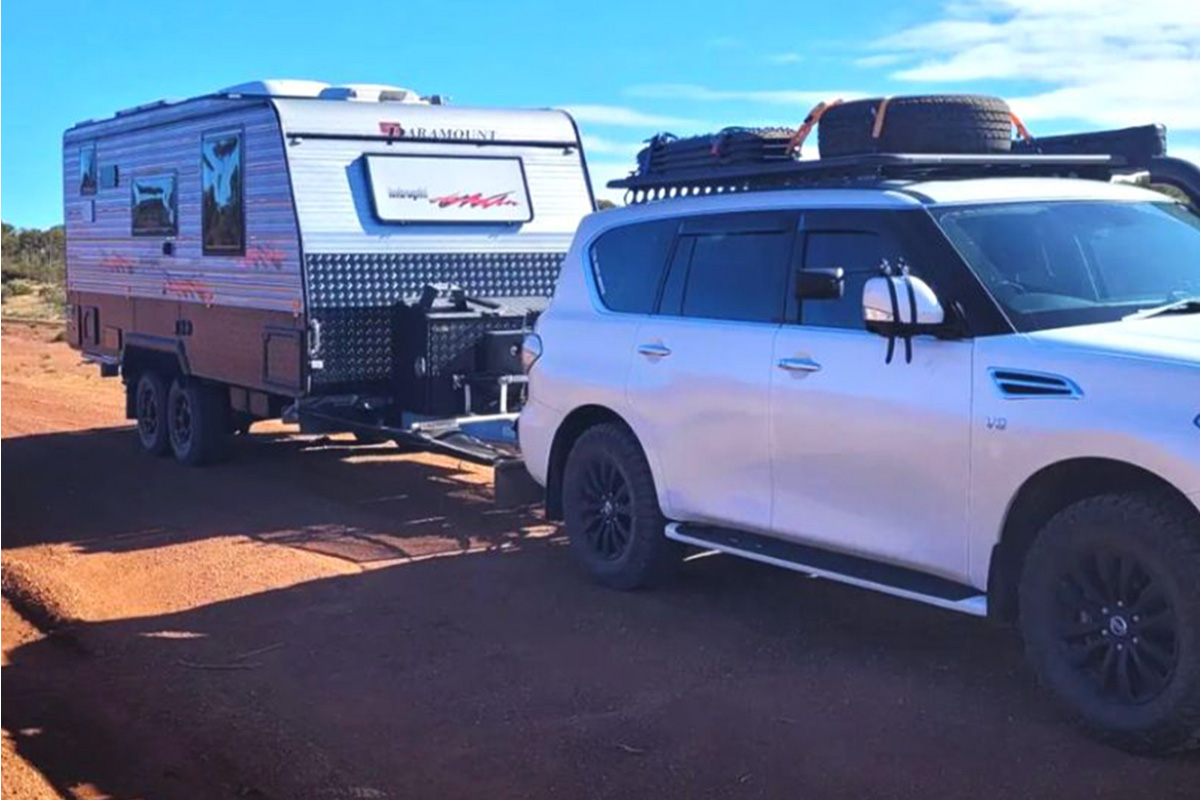
Why Caravan Size Matters
The size of a caravan matters as it affects the comfort, practicality and overall enjoyment of your travel experience. Whether you’re a solo traveller, a couple or a family of the right choosing the right size is essential. A micro caravan suits solo travellers, while larger options like a toy hauler cater to families, offering ample space for equipment and bikes, or serving as a spacious family van.
Beyond how many people are staying in the caravan – the length, weight and height of the van will also have an impact on the caravanning experience. The length of the caravan will determine how easy it is to drive, manoeuvre and park. For those driving on gazetted dirt roads, a caravan with a shorter length may be a better option as they are easier to navigate. Weight will affect towing capability, fuel consumption, and even driving comfort, while a high caravan will be less stable in windy conditions.
If you choose a large caravan over 7 metres in length, it is important to bear in mind where it will be stored when not being used. Most people store their caravans in a garage or driveway on their property, but there are also off-site caravan storage facilities.
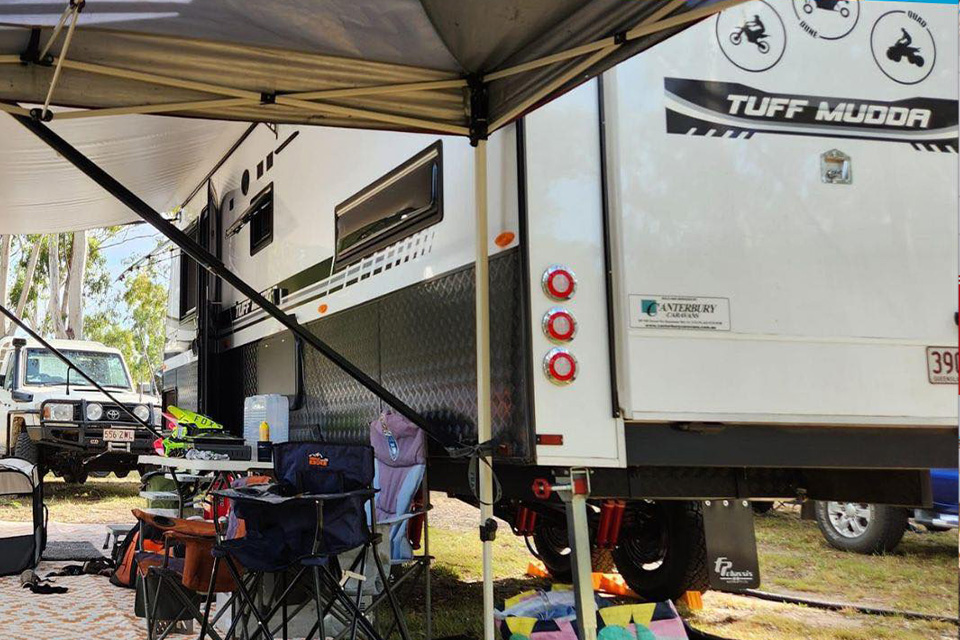
Sizes Caravans Come In
When discussing caravan size, it most often refers to the body length, which is a practical reference point when imagining the living space. Caravan retailers and online sellers tend to describe caravan size in terms of length to help determine the different caravan’s dimensions. The caravan body length is the external length of the van, not including the A-frame, the tow bar, or any accessories hanging off the caravan, and these are the measurements you see on caravan specifications.
*Caravan manufacturers use both imperial and metric measurements. This conversion chart will help you decipher caravan length.
Caravan lengths in metres and feet
| Metres | Feet |
| 3.05m | 10ft |
| 3.66m | 12ft |
| 3.96m | 13ft |
| 4.27m | 14ft |
| 4.57m | 15ft |
| 4.88m | 16ft |
| 5.18m | 17ft |
| 5.49m | 18ft |
| 5.8m | 19ft |
| 6.1m | 20ft |
| 6.4m | 21ft |
| 6.71m | 22ft |
| 7.01m | 23ft |
| 7.32m | 24ft |
| 7.92m | 26ft |
The average caravan is approximately 6.1 metres or 20 feet and is the most popular on-road touring caravan. Whether small, medium or large, every caravan offers different benefits. These are a few examples of each size caravan and their features.
- Small caravans: These usually measure between 3.3 metres (10ft) and 5.49 metres (18ft) and are ideal for solo travel or couples. A small caravan like this is lightweight to tow and easy to manoeuvre.
- Medium caravans: Medium-sized caravans usually measure between 5.49 metres (18ft) and 6.71 metres (22ft). A van like Thunder Range is an excellent choice for couples who want room to move or is ideal for small families. This middle-of-the-range caravan size is one of the most popular as it offers more space for couples and families but is still easy to drive and manoeuvre.
- Large caravans: Large caravans usually measure between 7.01 metres (23ft) and 7.92 metres(26ft). If you want ample room for living, sleeping, eating and relaxing, a large caravan like the Signature series is perfect as it can sleep up to 6 adults.
While caravan body length is the usual way caravan size is described, other measurements include the internal length and the overall length of the caravan. The internal length is the interior living space. It is measured from the furthest point of the inside of the caravan to the back of the van and is essentially the area you would live in. The overall length comprises the body length and everything attached to the caravan. This is measured from the coupling on the drawbar back to the rear of the caravan, including items attached to the van like toolboxes, water cans or bicycles. It is essential to know the overall length of the caravan as it is the size that will be towed.
Caravan Dimensions
Working out the right size caravan means considering all of the caravan’s dimensions. Length, height, width, and weight all contribute to the comfort and practicality of the caravan.
Caravan Length
As discussed, caravan length is the primary measurement used for caravan size. Apart from the three lengths previously discussed (body length, internal length, and overall length), some other measurements are open length, awning length, and combination length. These lengths are important to know for practical purposes. Open and awning lengths will help you determine how much space you need when the caravan is open and operational. The combination length will help you determine if you are comfortable towing a particular caravan and which parks might suit your vehicle and van.
- Open length: This is the entire length of the caravan from the most extreme point at the front and rear, with the beds popped out.
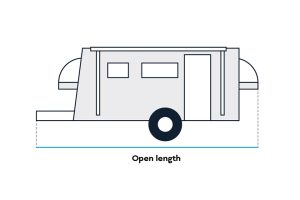
- Awning length: This is the length measured from the middle of the front awning arm to the middle of the rear awning arm.
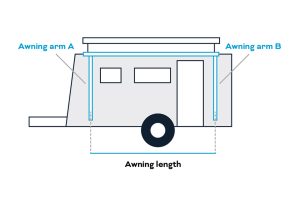
- Combination length: This is the combination of the tow vehicle and the caravan, measured from the front of the tow vehicle to the furthest rear point of the caravan.
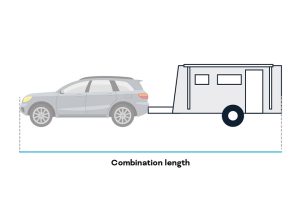
Caravan Height
While caravan height isn’t discussed a great deal, it is an important measurement to be aware of. It will help you understand the caravan’s height restrictions for parking areas, low bridges, garages or storage areas, and even low-hanging tree branches. The caravan height is the measurement from the top of the caravan to the ground, including any accessories like air conditioners or hatches. The standard caravan height is 2.7 to 3.2 metres but must not exceed 4.3 metres. Pop-top caravans usually measure approximately 2 metres in height when not extended.
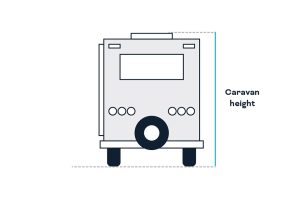
Caravan Width
While most caravans have an average width of between 2 and 2.5 metres wide, knowing the exact width of your caravan is important for logistical reasons, parking and towing. Legally, caravan width cannot exceed 2.5 metres, including the body, awning, rear bumper and wheel guards. Slide-out caravans offer the best of both worlds, keeping caravan width to a minimum while offering the benefit of sliding out extra living space.
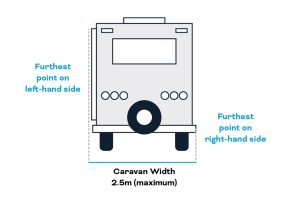
Caravan Weight
Understanding caravan weight is one of the most important dimensions, particularly as it relates to the tow vehicle. For safety and comfort reasons, it is essential to know how much your vehicle can legally tow and how much you can add to your caravan before it is over the legal weight. Nine different caravan weight measurements are used to assess load capability. These measurements are vehicle tare weight, vehicle kerb weight, gross vehicle mass, caravan tare weight, gross trailer mass, aggregate trailer mass, gross combination mass, tow ball weight, and payload.
- Vehicle Tare Weight: This is the weight of a standard vehicle (between midsize and large size) that is empty apart from fluids including oil, coolant and 10 litres of fuel.
- Vehicle Kerb Weight: The weight of a standard vehicle with a full tank of fuel.
- Gross Vehicle Mass (GVM): This is the total weight of the vehicle including kerb weight, and payload including passengers, luggage and accessories.
- Caravan Tare Weight: This is the caravan weight straight from the manufacturer. This includes factory-fitted accessories but does not include water in tanks or gas in cylinders, luggage or additional accessories.
- Gross Trailer Mass (GTM): Specified by the manufacturer, this is the maximum axle load the caravan is allowed to carry when hitched to the tow vehicle. It includes luggage, passengers and accessories.
- Aggregate Trailer Mass (ATM): Specified by the manufacturer, this is the maximum allowable weight of a fully loaded caravan when it is unhitched from the tow vehicle.It includes luggage, passengers and accessories.
- Gross Combination Mass (GCM): This is the maximum allowable weight of a caravan and tow vehicle combined as set by the manufacturer. It includes luggage, passengers and accessories.
- Tow Ball Weight (TBW): This is the amount of weight a fully loaded caravan puts onto the tow bar of the vehicle. This weight changes depending on the amount of payload, luggage, accessories and passengers.
- Payload: This is the total combined weight of all items that are loaded in the caravan. It includes any item added to the caravan that is not part of the tare weight specified by the manufacturer. This includes things like water, fuel, food, clothes and equipment.
How to Measure Caravan Dimensions
It is reasonably straightforward to measure a caravan’s dimensions whether that is length, height, width or weight. All you need is a tape measure or scales. Initially the most important step is to understand what you are measuring as defined previously in Caravan Dimensions. With this knowledge, here are some tips on how to measure caravan dimensions.
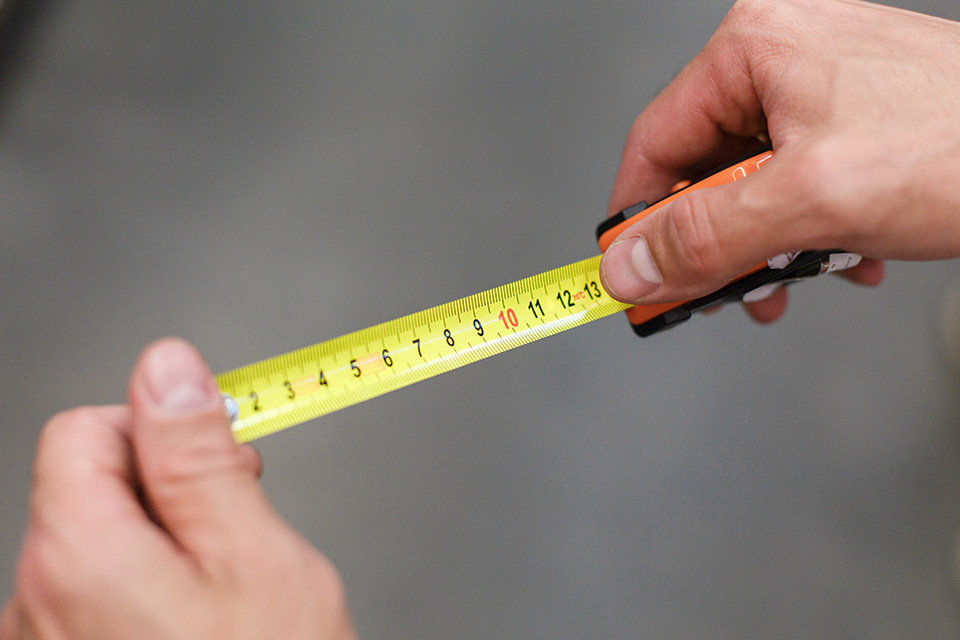
Caravan Length
To measure caravan length, you need to do three different measurements for overall, body and internal. To measure overall caravan length, get one person to hold a tape measure at the tip of the coupling and then extend it to the furthest point at the rear of the caravan, including anything that is attached to the back of the van.
To measure body length, get one person to hold a measuring tape at the end of the caravan’s front panel and extend to the rear panel at its furthest point.
To measure internal length, take the tape measure inside the caravan and measure from the front window or wall to the rear wall or window at its furthest point.
Caravan Height
To measure caravan height, place the tape measure at the top of the caravan, extending it right down to the ground, not just the floor of the caravan. This measurement will give you the overall height.
Caravan Width
To measure the width of a caravan, get one person to hold the tape measure on one side and extend across the body of the caravan at the widest parts, including wheel guards if the van has any. If your caravan has curves, measure the van width from underneath with a tape measure being held on each side.
Caravan Weight
To measure caravan weight you will need to either locate a public weighbridge or use portable scales at home. There are also mobile weigh stations that come to you.
For each weight measurement follow the instructions for what constitutes each weight. For example, the caravan tare weight is the weight without any additional accessories, water or gas in tanks. To measure this tare weight using a public weighbridge, you simply drive the van onto the weighbridge, making sure it is empty of luggage, accessories and gear. Unhitch the caravan from the car, leaving only the caravan on the scales, and record the weight.
On the other hand, to measure the GCM (gross combined mass) you will need a fully loaded vehicle and caravan. Simply drive the car and caravan onto the scales, ensuring they are both fully loaded with luggage, passengers, food, fuel and accessories, and record the combined weight.
Tow ball weight can be measured on a public weighbridge or by purchasing a set of ball weight scales to measure at home. To measure tow ball weight on a weighbridge, drive the vehicle onto the weighbridge and leave the caravan hitched up, making sure it is not on the scales. Note the weight of the car including the tow ball. Unhitch the caravan from the scales and drive only the car onto the scales, writing down its weight. Calculate the tow ball weight by subtracting the car weight from the car weight with the tow ball.
When deciding on buying a caravan, it is important to choose a size that is appropriate for your needs. Caravan size, including length, width, height and weight can all affect your driving, comfort and safety. In this article, we break down the caravan size terminology, and define each measurement and dimension to help you choose the right size caravan for your adventures. For further information, why not contact the team at Paramount Caravans, the experts in explaining caravan sizes.

